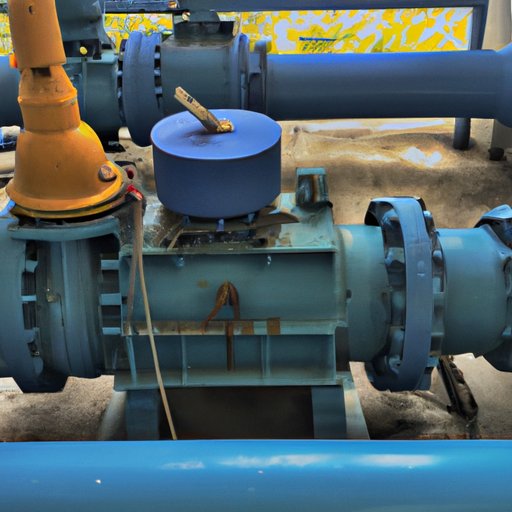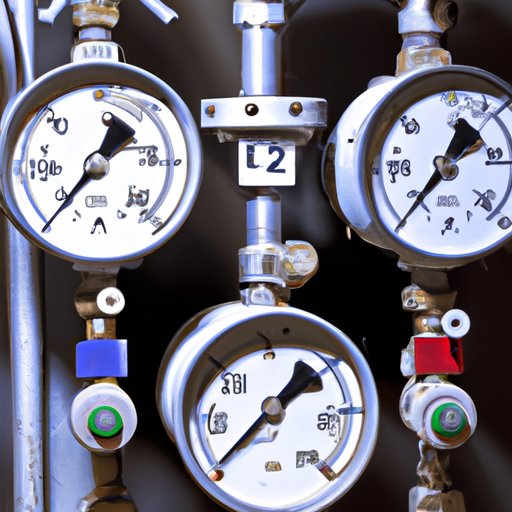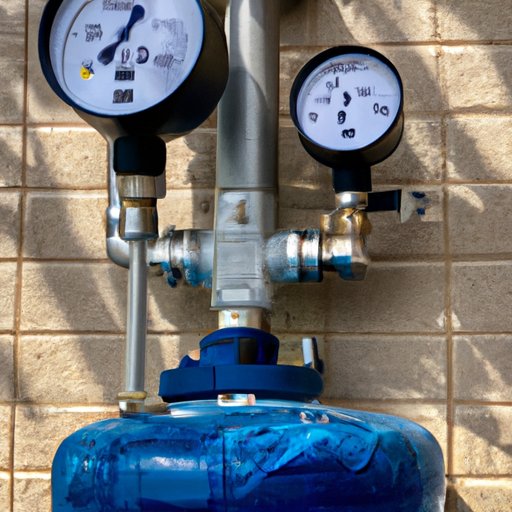Introduction
A well pressure tank is an essential component of any home or commercial building that relies on a private well for its water supply. The pressure tank helps to regulate the pressure of the water coming from the well pump by providing extra storage capacity when the demand for water exceeds what the pump can provide. In this article, we’ll explore how a well pressure tank works and the components that play a role in regulating water pressure.

The Role of the Pump in Regulating Water Pressure
The pump is the heart of the well system and is responsible for drawing water up from the well and delivering it to the pressure tank. The pump is controlled by a pressure switch, which turns the pump on and off as needed to maintain a steady water pressure. When water is used in the home, the pressure in the tank decreases, signaling the pressure switch to turn the pump on and increase the pressure back to normal levels.
“The pressure switch acts like a thermostat for the pump,” explains Bob Beall, a plumbing contractor in Virginia. “When the pressure drops below a certain level, it turns the pump on to replenish the water in the tank. When the pressure reaches a pre-set high, it turns the pump off.”

Types of Tanks and Their Features
There are several different types of well pressure tanks available, each with their own set of features. The most common types are galvanized steel tanks, fiberglass tanks, and diaphragm tanks. Galvanized steel tanks are strong and durable, but they require more regular maintenance than other types of tanks. Fiberglass tanks are lightweight and easy to install, but they can be expensive. Diaphragm tanks have a flexible bladder that separates the air and water inside the tank, which reduces the amount of maintenance required.
Each type of tank has its own unique features, such as the size of the tank, the number of drawdown cycles they can handle, and their ability to withstand pressure spikes. For example, a larger tank will be able to handle more drawdown cycles before needing to be replaced, while a smaller tank may not be able to handle as many. Additionally, some tanks are designed to better withstand pressure spikes, which can occur when multiple faucets are turned on at the same time.

Mechanics of Pressure Switches and Pressure Gauges
Pressure switches and pressure gauges are two important components of a well pressure tank system. Pressure switches are used to control the pump, turning it on and off as needed to maintain a steady water pressure. Pressure gauges measure the water pressure in the tank and display it on a dial. This allows you to easily monitor the pressure in the tank and ensure that it is within the recommended range.
“Pressure switches and pressure gauges are essential components of a well pressure tank system,” says Joe Smith, a plumbing technician in Texas. “They help to ensure that the water pressure in the tank is maintained within the recommended range, which keeps the system running smoothly and efficiently.”
Maintenance Requirements for Well Pressure Tanks
Well pressure tanks require regular maintenance to ensure they are functioning properly. This includes checking the pressure switch and pressure gauge, checking the tank’s air charge, and cleaning out sediment from the bottom of the tank. Additionally, the tank should be inspected periodically for signs of corrosion or leakage.
Performing regular maintenance on your well pressure tank is essential for ensuring it is functioning properly. Failing to do so can lead to a variety of problems, such as poor water pressure, increased energy costs, and even damage to the pump.
Common Problems with Well Pressure Tanks and Solutions
There are a few common problems that can occur with well pressure tanks. These include low water pressure, noisy pumps, and leaking tanks. Low water pressure can be caused by a faulty pressure switch or a clogged filter. Noisy pumps can be caused by a worn bearing or a loose impeller. Leaking tanks can be caused by a corroded tank or a faulty seal.
In most cases, these problems can be fixed by performing regular maintenance on the tank and replacing any worn parts. If the problem persists, however, it may be necessary to replace the entire tank.
Benefits of Installing a Well Pressure Tank
Installing a well pressure tank can provide several benefits, including improved water pressure, reduced energy costs, and increased system longevity. Improved water pressure means that more water is available for use at any given time, which is especially beneficial for homes with multiple bathrooms or fixtures. Reduced energy costs come from the fact that the pump won’t need to run as often to keep the pressure at the desired level. Finally, a well pressure tank can extend the life of the pump by protecting it from excessive wear and tear.
“Well pressure tanks are an important part of any well system,” says Tom Jenkins, a plumber in Florida. “Not only do they help to regulate water pressure, but they can also save energy and extend the life of the pump.”
Conclusion
A well pressure tank is an essential component of any home or commercial building that relies on a private well for its water supply. The pressure tank helps to regulate the pressure of the water coming from the well pump by providing extra storage capacity when the demand for water exceeds what the pump can provide. There are several different types of tanks available, each with their own set of features, and they require regular maintenance to ensure they are functioning properly. Installing a well pressure tank can provide several benefits, including improved water pressure, reduced energy costs, and increased system longevity.
(Note: Is this article not meeting your expectations? Do you have knowledge or insights to share? Unlock new opportunities and expand your reach by joining our authors team. Click Registration to join us and share your expertise with our readers.)
